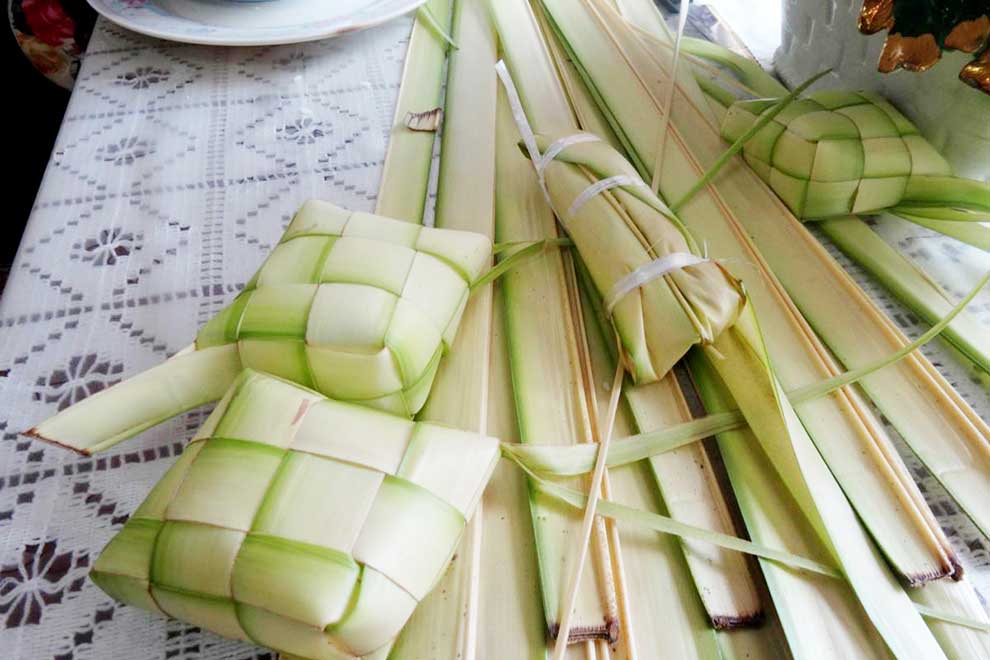
Another Cambodian painting in the NMS collection is Pech Song’s oil on canvas titled 7 January Victory Day. PECH SONG/NMS COLLECTION
The National Museum of Singapore (NMS) – in collaboration with the Maybank Foundation – is holding an open call for artists to submit videos exploring the theme of intangible cultural heritage.
According to the NMS, cultural heritage can be broken down into eight main categories – social practices, rituals, festive events, knowledge and practices concerning nature and the universe, oral traditions and expressions, food, traditional crafts and performing arts.
The NMS is conducting an open call this year from April 19 to May 18 in order to commission a series of video-based artworks to showcase on the museum’s LED wall. Four proposals will be selected and each will be awarded a commission of $37,500 to produce the video they’ve proposed.
The selected videos are tentatively scheduled to be showcased around November, 2022 for a period of three months, according to the NMS.
The open call invites artists and all creative people from Singapore and Southeast Asia to submit proposals that respond to the theme of intangible cultural heritage, according to an NMS press release.

Untitled (The Chinese Man Eats the Cambodian Soup). KHIN/NMS
In this second open call, NMS hopes to invite Cambodian artists and creatives to produce video-based works contemplating the theme of Intangible Cultural Heritage. These works should be new works produced specifically for the NMS LED wall.
According to the NMS, in developing their video-based presentations on the intangible cultural heritage theme, artists are invited to view and respond to the NMS collections that can be accessed via this link: https://bit.ly/NMS_Collections
As part of this open call, artists are invited to reference and take inspiration from the National Collection.
Pech Song’s oil on canvas titled 7 January Victory Day, which has been used in propaganda by five successive – and opposing – political regimes in Cambodia. It’s style is more or less the “Socialist realism” aesthetic pioneered by the USSR and Maoist China for their propaganda efforts. It has the obligatory crowds of cheering proletarians and a later version 7 January 1979-1984 adds workers, soldiers and farmers striking heroic poses front and centre as they gaze off into the distance together.
“The original work was reproduced on billboards around Cambodia and has been lost. This version was reproduced by the artist based on a photograph documenting the original work,” according to the NMS National collection notes.

Blue Night. This is You Khin’s earliest surviving work. KHIN/NMS
Another Cambodian artist is You Khin's work at NGS as another piece of Cambodian art that can be found in Singapore. You Khin’s oil on canvas painting Untitled (The Chinese Man Eats the Cambodian Soup) is one of several by Cambodian artists in the National Gallery of Singapore (NGS). Khin’s painting was dated April 17, 1975 – the first day the Khmer Rouge gained control of Phnom Penh – which took place just after Khin had left for France. He would not return to Cambodia until 2003.
You Khin (b. 1947 and d. 2009) is the only well-documented Cambodian artist active before the Khmer Rouge took power who continued his career during and after that period. He left the country just before the fall of Phnom Penh. He used a cubist-like style of semi-abstraction in his paintings depicting urban scenes with a focus on migrants and poverty as their subject matter, according to the NMS collection website.
The NMS also offers examples that would be considered valid topics for exploration in the videos submitted: Indian dance and Malay dance forms, food heritage such as hawker culture, the making of popiah, events such as Silat, Chingay and Easter, traditional craftsmanship such as peranakan beadwork and embroidery and bodies of folk knowledge such as traditional Chinese medicine.
Another example given by the NMS is the making of Malay ketupat, which is similar to Cambodia’s Num Kantom and are basically rice cakes wrapped in coconut leaves.
The cake is traditionally used as a form of offering in religious ceremonies in the Malay world and the name ketupat is believed to be derived from the Javanese words ngakulepat, which means “admitting one’s mistakes.”

Ketupat is very similar in form to Cambodia’s Num Kantom – rice cakes wrapped in coconuts leaves. SUPPLIED
Ketupat is often served as a celebratory food that is commonly enjoyed by families during the Hari Raya celebrations in Singapore along with a variety of other dishes.
NMS noted that this list is nowhere near exhaustive since the artist’s interpretation of what is intangible cultural heritage could probably be stretched to cover just about anything as long as they did it creatively and thoughtfully.
The second open call period is in progress now until May 18, 2022 and the newly commissioned works are expected to be showcased at the end of 2022.
The evaluation criteria being used by the judges will try to measure three things: The merit of the proposal (40 per cent), the impact of the proposal (30 per cent) and the project’s planning and management (30 per cent).
More information on this opportunity for artists is available at these websites:
https://bit.ly/NMSOpenCall
https://bit.ly/RootsICH

















